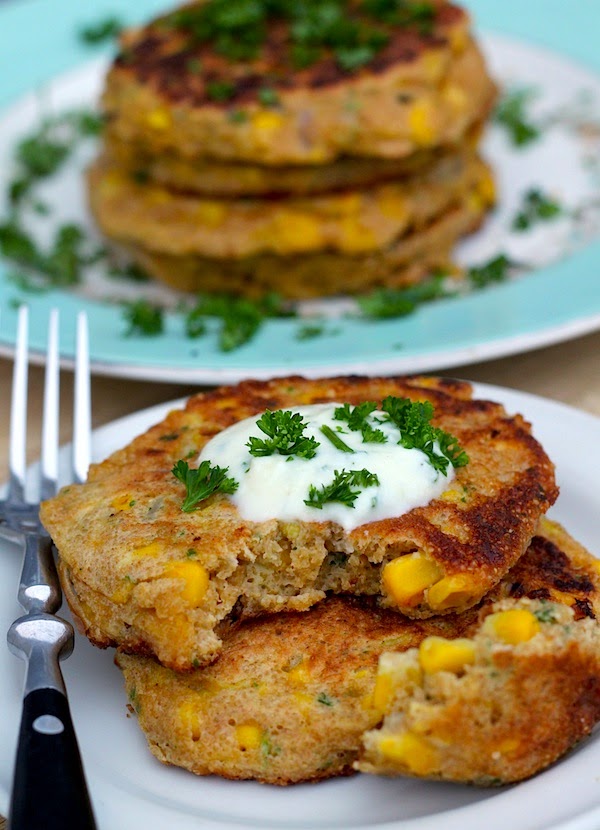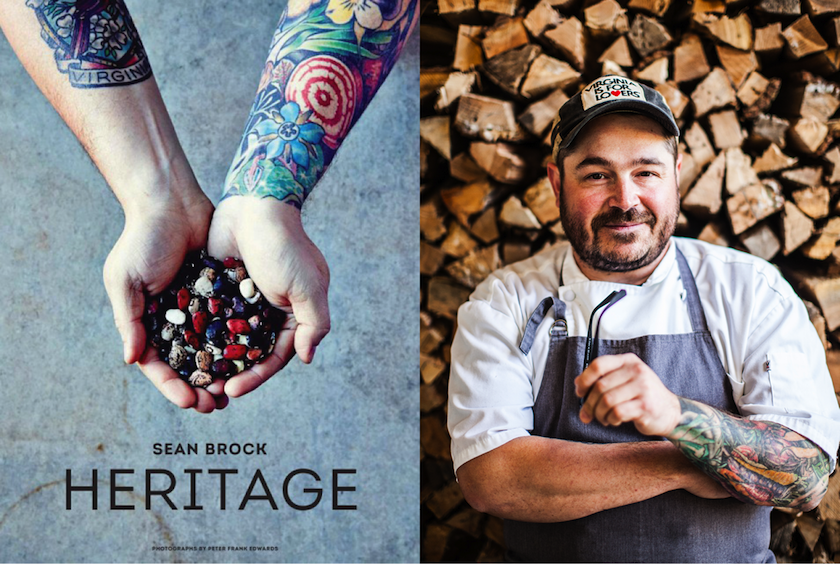I hope this video will make you excited about beans. I know they're not always easy to get excited about. They're not all that glamorous (well, unless you're Sean Brock, in which case they will match your tattoos and look like a work of art), and you may not find them all that inspiring, at first glance. But when you get to know them, or grow them, you see that there's a kind of magic about beans. There are colors and patterns and dots and lines and all sorts of shapes and sizes, varying levels of shine and smoothness… some beans almost glow. I can get completely lost in the bean section of a seed catalogue, especially at this time of year, when dreams of gardening start to tug at my heart on these cold cold days.
There's no doubt that I got my bean enthusiasm from my mom. She grew many varieties in her garden, always trying new ones. Her eyes would sparkle when she talked about her favourites. She grew enough dry beans for us to eat through the winter months, always saving enough to plant again in the spring, or to share a few with gardening friends. In this video, you'll see one easy way to thresh a large amount of beans quickly. We used a box fan but a windy day is sometimes just as good. Of course, good old hand shelling is fun too, especially if you gather some friends or family to give you a hand.
This salad is made with our Black Coco Beans, which are big and meaty, almost velvety in texture. But any kind of black bean will do the trick. The salad is nourishing and bursting with flavour. You can't really go wrong with mango, avocado, sweet potato, cilantro and a lime cumin dressing. Unless you don't like some of those ingredients, of course, in which case feel free to swap them out for something that tickles your tastebuds.
You'll find my recipe over on PBS Food. I think you'll like it! Let me know if you make it...
Even though the holidays are long gone, I'm still indulging in one of my favorite seasonal activities: sitting by the wood stove with a big pile of new cookbooks to read through. Joy. And there's one that continuously captures my attention: Sean Brock's hot-off-the-press new cookbook, Heritage. And lucky you, Artisan Publishing is giving away a copy to a Kitchen Vignettes reader (Canadian residents only are eligible for this one), so be sure to enter the giveaway below!
My guy and I developed a huge foodie crush on Sean Brock this fall, when we became obsessed with the PBS show The Mind of A Chef. At the top of our resolution list is a trip to one his celebrated restaurants in Charston or Nashville. As growers of heirloom grains (aka, major seed nerds), we love this man's commitment to sourcing regional, traditional ingredients, many of which have almost gone extinct in the race for big monoculture crops that simply yield, yield, yield. This excerpt from Mind of A Chef shows Sean preparing a dreamy Farro Verde Succotash. It makes me yearn for summer.
This cookbook probably has the best cover of all time. The tattoos, the beans, the colors, I mean, you don't even need to open the book and you've already had a visual feast. But lift the cover and you're swept away to a land of pure elegance and inspiration, a place where practical recipes for Skillet Roasted Chicken or Corn Grits live side by side with more elaborate ones such as Stone Crab with Cucumber Juice, Fennel Jelly, and Raw Apple or Rabbit Andouille with Braised Peppers and Lady Pea Gravy. Every photo inspires me to get more creative about food presentation and even in this old farmhouse, to give some of these fancy chef plating tricks a try, for the fun of it.
The first thing I made from the book was the Farrotto with Acorn Squash and Kale (because yes, we STILL have kale standing strong out there), a perfect winter dish, warm, filling, and deeply flavourful. Next up on my list are the Einkorn Biscuits, the Brown Oyster Stew with Benne, and the Tomato Jam. As a Canadian, I didn't know a whole lot about Southern cuisine. This book is a perfect introduction and I love how Sean walks you through the step by step process of "How to cook grits like a Southerner" and "How to build a pit and cook a whole pig like a champion pitmaster". I'll warn you, some of the recipes in the book do look complicated and some of the ingredients are hard to come by, but the spirit of this book is to inspire and challenge us all to try new things, to learn the value of sourcing local ingredients, to get in touch with our own heritage and learn to adapt recipes to our own regions, based on what is available in our part of the world. After all, even before you get all the pots and pans out, the heart of a recipe begins with finding the best ingredients one can possibly find.
I will announce the winner of the cookbook this weekend! Bonne chance! (This giveaway can only ship within Canada, but I promise some exciting giveaways for you non-Canadians later in the year!)
a Rafflecopter giveaway
Up until recently, any amaranth that entered my kitchen was destined to a lifetime of sitting at the back of a dark cupboard, where aside from the occasional tentative glance, it remained untouched and unused. Usually, enough years would go by that I would finally be forced to dump it in the compost, hoping the earthworms at least would enjoy it. Then I would see it again in the health food store, all fresh and minuscule and promising, so I'd buy a little bag (just a little bag), vowing to make friends with it and create something tasty this time, and the same cycle would start over. I did, along the way, manage a few gluey porridge experiments, but these left me unenthused and even more baffled by the tiny grain. Amaranth porridge is ok, but I infinitely prefer making a bowl of creamy teff porridge, or sticking to plain old wonderful oatmeal.
 But a couple years ago, I pulled a neglected bag of amaranth out from the back of my cupboard, determined to give it another chance. The cooking instructions for amaranth generally call for a 3 to 1 ratio of water to grain, which yields the gooey porridge I refer to above. I decided to reduce the water significantly in an attempt to achieve a fluffy cooked grain, and suddenly, amaranth and I were making some headway. Cooked in a 1 to 1 ratio, and only to 'al dente', followed by a resting period under cover at the end of cooking, the grains were beautiful. Not heavy and gooey, but light and fluffy with a lovely chew that lends itself well to many recipes. And that's a good thing if one takes a look at their superstar nutrient profile!
But a couple years ago, I pulled a neglected bag of amaranth out from the back of my cupboard, determined to give it another chance. The cooking instructions for amaranth generally call for a 3 to 1 ratio of water to grain, which yields the gooey porridge I refer to above. I decided to reduce the water significantly in an attempt to achieve a fluffy cooked grain, and suddenly, amaranth and I were making some headway. Cooked in a 1 to 1 ratio, and only to 'al dente', followed by a resting period under cover at the end of cooking, the grains were beautiful. Not heavy and gooey, but light and fluffy with a lovely chew that lends itself well to many recipes. And that's a good thing if one takes a look at their superstar nutrient profile!

Upon having this mini amaranth-epiphany, one of my first recipe experiments was to try the fritters recipe on the back of the Bob's Red Mill bag of amaranth. They were delicious! Over time, I adapted the recipe and arrived at an amaranth corn fritter that is packed with flavour and crunch and has become one of my favorite go-to lunches.
To get my amaranth corn fritters recipe, click here.
And please do leave me a comment below, sharing your own favorite ways to prepare amaranth!






